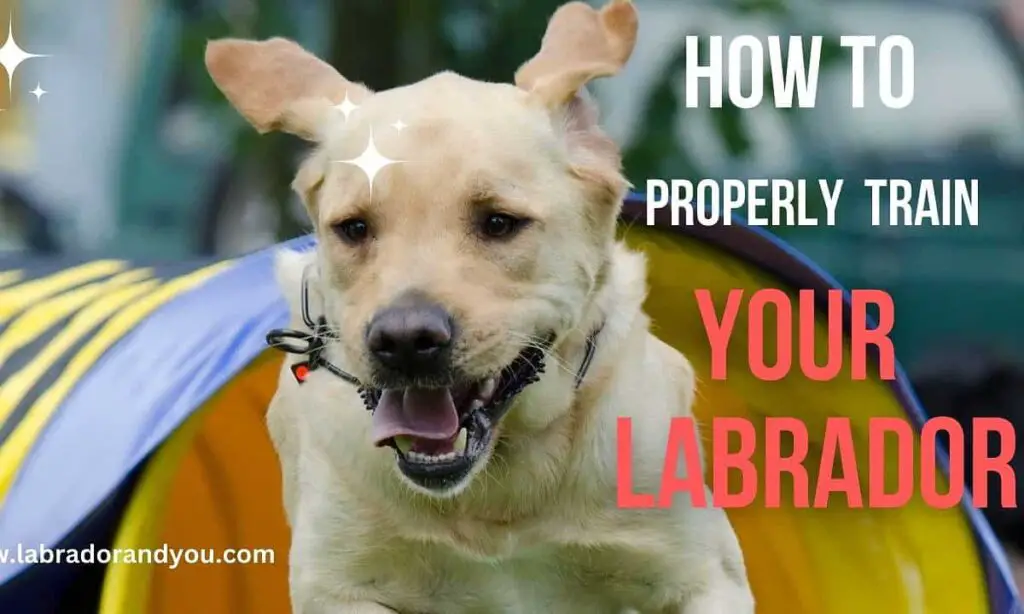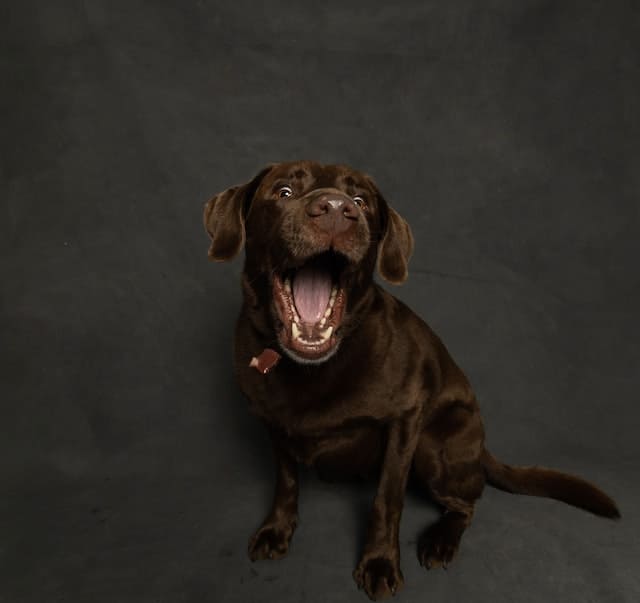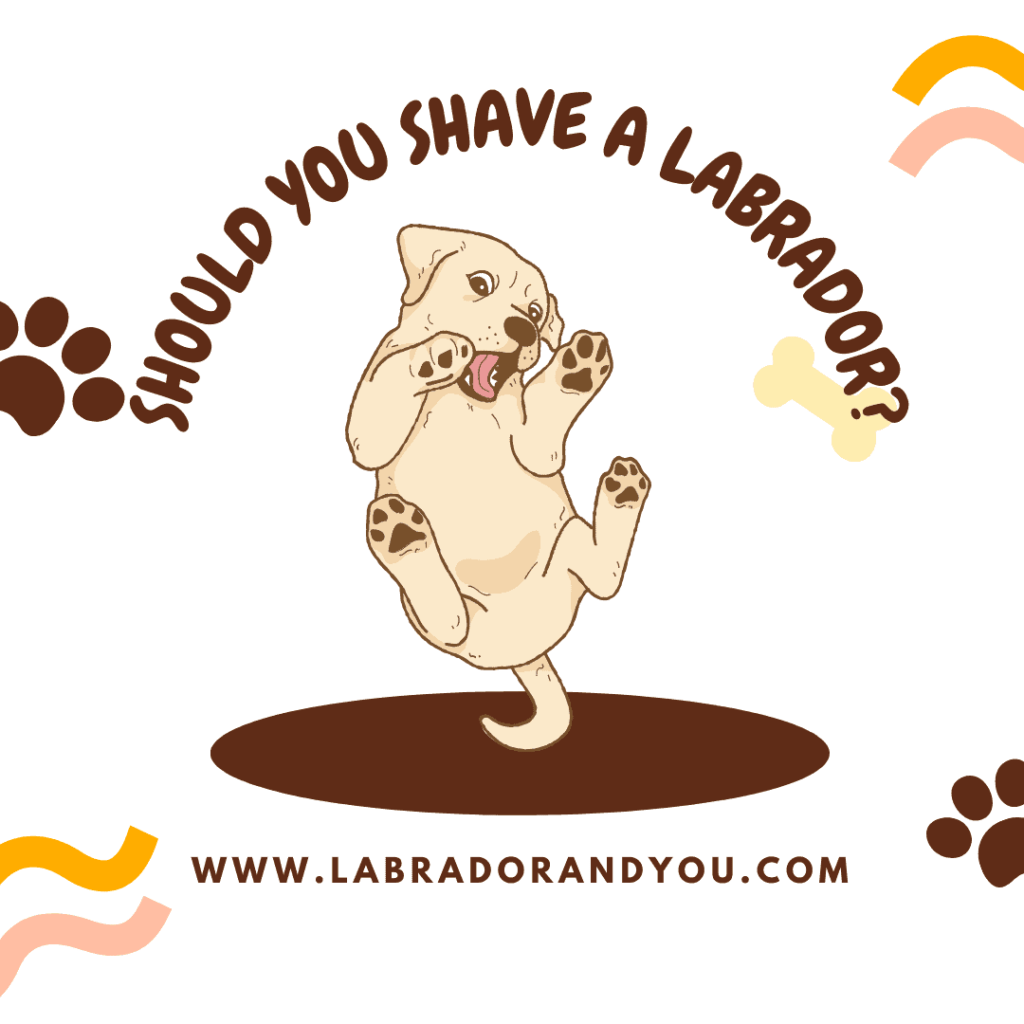Labrador Retriever owners are always curious about keeping their adorable and energetic dogs looking their best. Labradors are low-maintenance pets with minimal grooming requirements. However, it is essential to groom labrador to ensure your dog stays happy and healthy. Explore everything from brushing techniques and tools, trimming nails, cleaning ears and teeth, and bathing guidelines.
When To Start Grooming Labrador Retrievers?
Introducing your Labrador to grooming early is essential. It will create a trusting bond between you and your dog. Start familiarizing your Labrador with grooming when they are around eight weeks old. It will help them understand that grooming is a normal routine.
Starting young ensures your dog becomes accustomed. It includes brushing coats, cutting dog’s nails, cleaning dog’s ears, etc. Labrador retrievers shed twice a year in handfuls. Proper grooming practices help manage labrador shedding.
Besides building trust, it allows early detection of issues like unexpected hair loss or skin irritations. Schedule periodic visits to the local groomer for professional cleaning. It will keep the dog’s skin, hair, nails, and feet in the best shape.
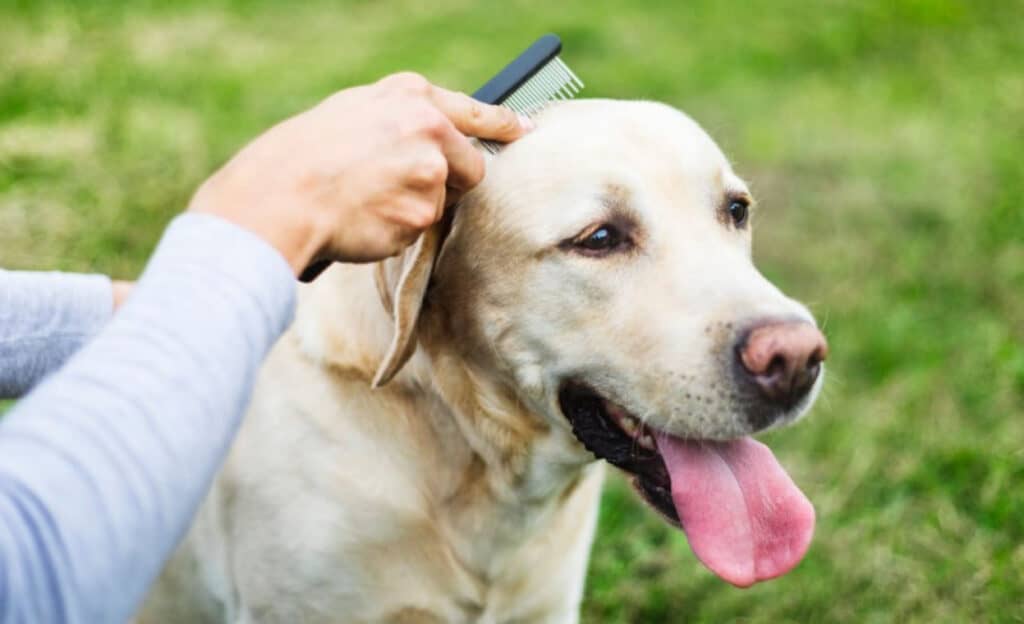
How often to groom a labrador?
Grooming frequency is vital in maintaining your dog’s coat and overall health. Weekly grooming removes dead hair from the dog’s body and prevents build-up. Labs shed more during spring and fall when the seasonal coats get transformed. Adjust your grooming routine accordingly during these times.
Just because they need low maintenance doesn’t mean you neglect labrador grooming needs. Keep the nails trimmed always, and be vigilant for ear infections. Prevent overgrown nails or ear infections.
Establish a monthly bath regimen to clean their water-resistant coat without stripping natural oils from their skin. Use tools like a slicker brush to improve the dog’s fur. Proper care extends beyond just playing fetch. Maintaining a consistent schedule is vital for optimal health.
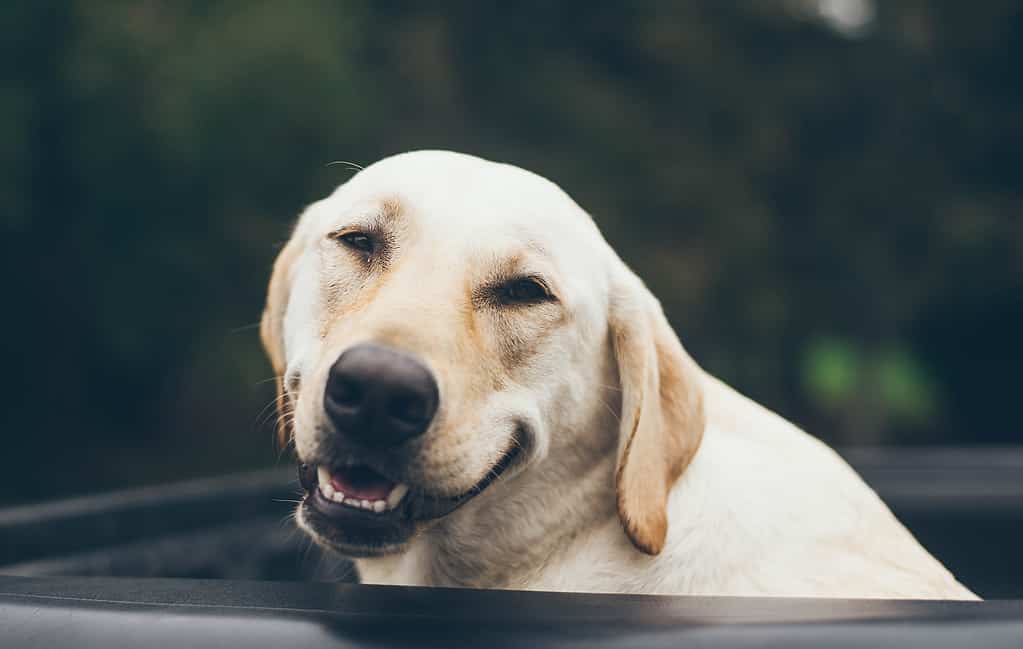
Does A Labrador Need Grooming?
Labrador Retrievers’ has a double water-resistant coat and shed seasonally. It requires more brushing during heavy shedding seasons. Regular grooming eliminates dead hair and maintains a shiny coat. Basic grooming tasks include cleaning the dog’s feet, teeth, ears, coat, etc.
Teeth and ear cleaning prevent dental problems and ear infections, respectively. Use a dog toothbrush for added dental benefits. Regular brushing with slicker brushes or undercoat rakes removes loose hair and avoids matting. Use a detangling spray in such cases.
How To Groom A Labrador the right way?
Brushing techniques and tools are essential for grooming Labrador retrievers.
Brushing Techniques And Tools
Regular Brushing is a must to groom a labrador retriever properly. A slicker brush and an undercoat rake are handy tools.
- Start from the neck and work your way down to the tail.
- Do not use too much pressure when brushing, as it can be uncomfortable.
- Use proper tools like de-shedding combs or brushes for effective results.
- Do not irritate their skin by pulling on their coat aggressively.
- Use gentle and firm strokes while holding each section of fur with one hand while working with another hand.
Trimming Dog’s Nails
Trimming nails shouldn’t be overlooked. Long nails cause discomfort and pain and restrict their movement on slippery surfaces. Labs’ nails naturally get filed due to contact with the ground. However, they still need periodic trimming.
Trimming dog’s nails can be challenging and requires a calm and composed approach. Regular trimming helps maintain optimal foot health and prevents injuries caused by ingrown toenails. It avoids potential infections from broken nails. Long nails may bustle you at first when intending to groom your labrador. With regular training sessions, it can become easier.
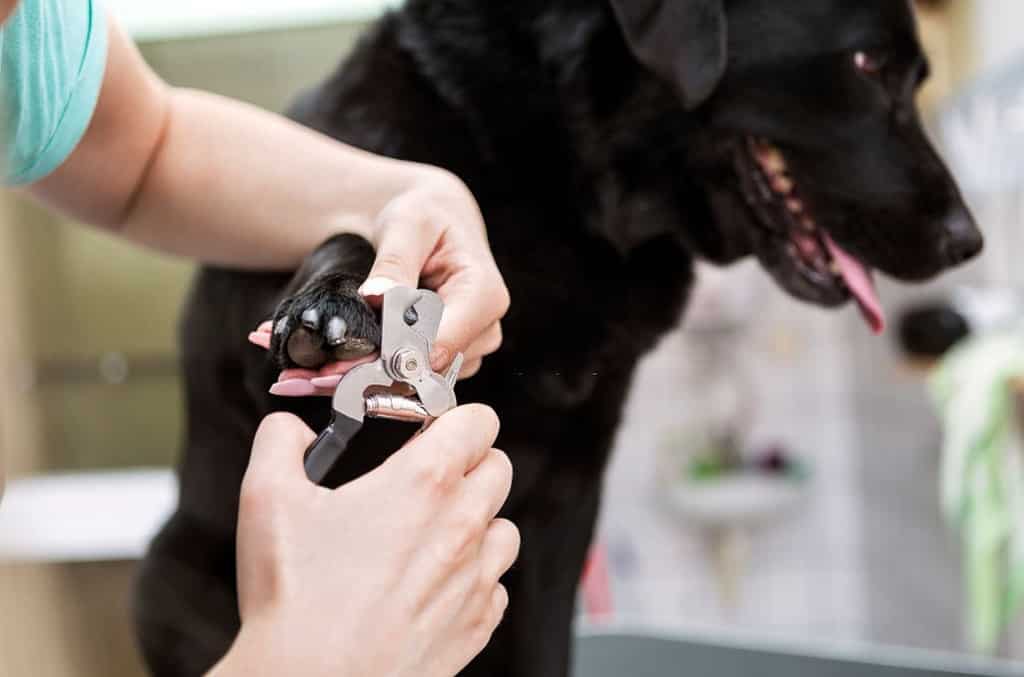
Cleaning Lab’s Teeth And Teeth
Brush your dog’s teeth at least twice weekly with a soft-bristled toothbrush.
- Use a dog toothbrush and toothpaste to prevent periodontal disease, plaque buildup, and bad breath.
- Use cotton balls or swabs dampened with ear cleaner to remove dirt and wax buildup from the ears.
- Labs have floppy ears that can trap moisture, leading to an ear infection. Clean their ears with gentle solutions like saline or apple cider vinegar mixed with water to reduce the infection risk.
- Monitor your dog’s ear health by routinely checking for redness, swelling, or discharge signs.
Proper dental hygiene combined with regular ear cleansing ensures healthy Labradors.
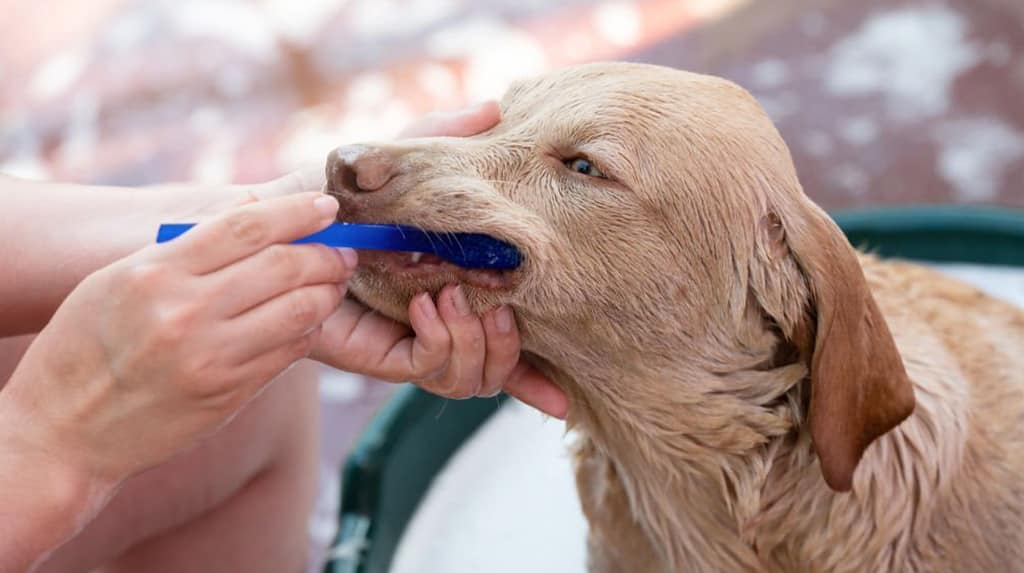
Bathing Guidelines For Dog’s Coat
Bathing a Labrador can be tricky, as you don’t want to overdo it. Bathe them when necessary, like after getting into something particularly dirty or smelly.
- Use a dog-specific shampoo and rinse thoroughly, careful not to leave any soap residue behind.
- Avoid using hot water as it irritates their skin and causes itchiness or flakiness. Instead, use lukewarm water and gently massage the damp undercoat while washing.
- Use a clean cloth to dry the coat thoroughly before brushing out any remaining tangles or mats.
Proper bathing techniques maintain your Labrador’s coat without compromising skin health. Especially during the hot summer months.
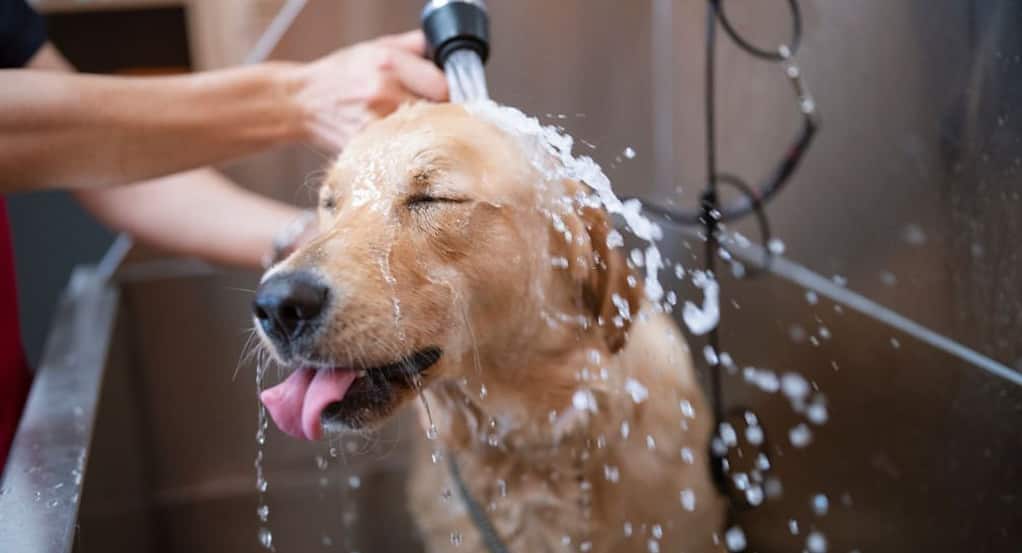
Proper Rewards For Your Pup
Offering treats or fun toys helps them associate the experience with something pleasurable. Another process is by offering verbal praise and affection throughout each session. It will reinforce good behavior and strengthen your bond with your pet.
Consistency is key, so offer these rewards during each session. Try incorporating playtime before or after a grooming session as an extra reward for their patience and cooperation.
Necessary Grooming Supplies
Having the necessary tools is key. Some essential supplies include brushes, de-shedding tools, nail clippers, shampoo, and tooth-cleaning tools.
A natural or nylon bristle brush should be used to brush your Labrador’s coat to remove tangles and loose hair. You’ll also need nail clippers for regular trimming. A good quality shampoo formulated explicitly for dogs keeps their skin clean without stripping it of its natural oils.
What Are The Benefits Of Grooming Your Labrador Retriever?
Grooming your Labrador reduces shedding and maintains a healthy coat.
Reduced Shedding
Reducing labrador shedding is a top priority for many Labrador owners. While it’s impossible to eliminate shedding as they shed fur, regular grooming controls it and removes dead hair.
- Brush your Labrador’s coat daily and rake twice weekly to remove loose hair.
- Besides brushing, feeding your Lab a diet rich in omega-3 fatty acids reduces shedding.
Omega-3 is essential for healthy skin and coat. It helps maintain natural oils to keep the fur shiny and robust. Consider adding supplements or changing your dog’s food if excessive shedding occurs.
Maintaining A Healthy Coat
Labrador Retrievers have a double coat that regularly sheds. Hence brushing them frequently is essential. Brushing and bathing your Labrador every few months keeps its coat in good condition.
Socialization And Trust Building
Exposing your pup to new people, experiences, and other dogs builds their confidence and decreases anxiety during grooming. Early socialization prevents behavioral issues like aggression or fear towards specific grooming tools.
Socialization strengthens the bond between you and your Labrador. Regular positive interactions with treats and praise make them more receptive to grooming. Trust building takes time and consistency. Start by incorporating small positive reinforcement daily rather than only rewarding good behavior during grooming.
Labrador Puppies And Grooming
Start grooming Labrador puppies early to get them used to the process and develop good habits. Read on for guidelines on when to start, grooming tasks, and how to make it a positive experience.
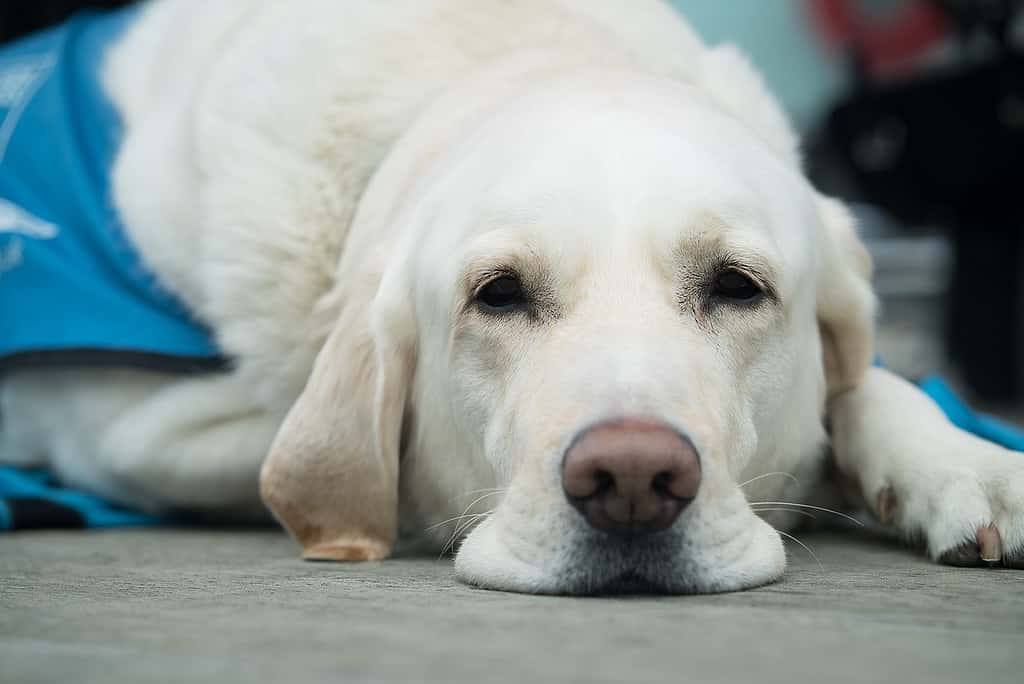
Guidelines For Grooming labrador dog puppy
When grooming Labrador puppies, it’s important to start early. The ideal age to introduce a puppy to grooming is around 8-16 weeks. This helps the pup become comfortable with the process early on and reduces anxiety. Go slowly and use positive reinforcement techniques like treats or praise for the introduction. Start with short grooming sessions, so the pup doesn’t get overwhelmed.
Focus on basic tasks like brushing and trimming the lab’s nails before moving on to more advanced care like ear cleaning or teeth brushing. Ensuring they have all the necessary vaccinations before the introduction is important.
Is It Okay To Cut A Labrador’s Hair?
Cutting a Labrador’s hair is not recommended. Labrador retrievers have double coats that provide insulation and protection from hot and cold weather.
- Trimming or shaving their coat can damage the undercoat. It results in sunburn, overheating, hypothermia, or infections.
- Labrador’s fur sheds naturally to allow new growth; shaving their hair interrupts the process.
- Avoid cutting or trimming your labrador’s hair unless deemed necessary by a professional groomer.
- Monitor certain skin conditions on areas exposed by cutting or contact with irritants like tar or chemicals. It could otherwise harm their health if left unattended.
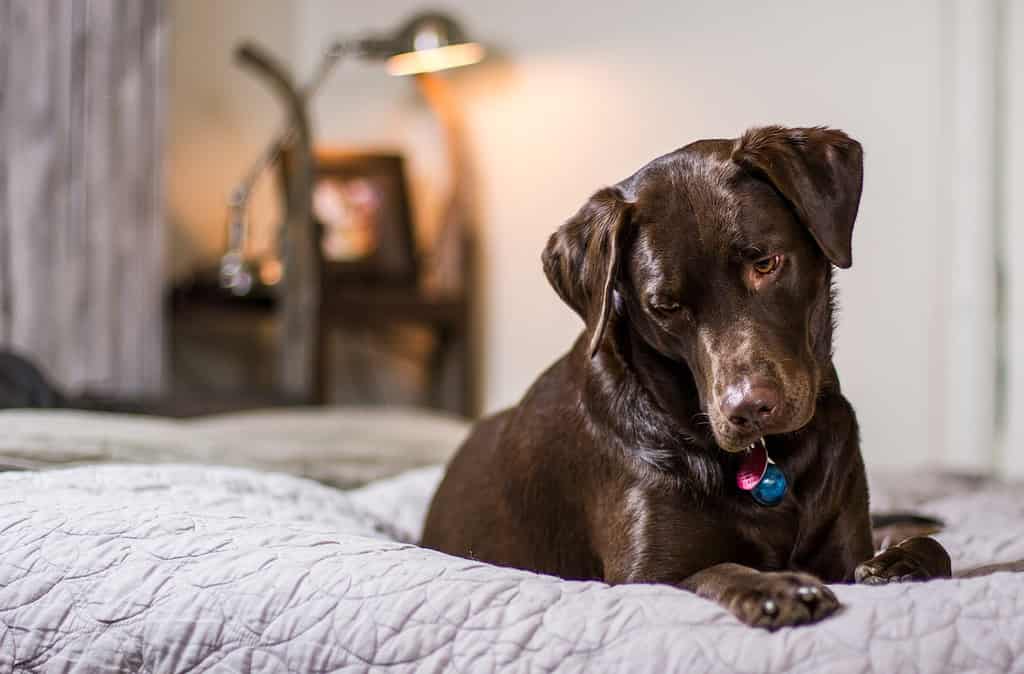
Tips For Successful Labrador Grooming
Consistency And Patience
Regular grooming early on will benefit your dog’s coat and skin health. Remain patient throughout the process, as Labradors can be easily distracted during grooming sessions. Labradors require constant attention. Patience is essential during nail trimming since it requires a steady hand to avoid injuries.
Positive Reinforcement
Positive reinforcement is a highly effective method. This approach involves rewarding behavior, like sitting still during grooming or allowing their paws to be handled without resistance.
Unlike other methods that rely on punishment or force, positive reinforcement creates a more comfortable and enjoyable grooming experience. It prevents stress-related health issues like heart disease resulting from excessive anxiety in dogs.
A Grooming Routine: How Often Should You Brush Your Labrador
Establish a regular schedule and stick to it so your pup knows what to expect. Start by brushing them daily or at least twice weekly to remove tangles or matting. Follow it consistently for the best results.
FAQs
Do labradors need professional grooming?
While some owners prefer to groom their Labradors at home, others prefer a professional groomer. A professional grooming session ensures everything is cared for in one go. Regular visits to a professional groomer can help detect potential health problems early on.
Should I Groom pure breed lab puppies?
Yes, grooming lab puppies is essential as it gets them accustomed to being touched and handled. By starting grooming early, they will be more relaxed during future sessions. It makes the process much easier for both the pet and the owner.
When Do Labs Need Grooming The Most?
Labradors need grooming the most during shedding season. It typically happens twice a year. Labs shed their thick undercoat to prepare for what’s coming.
How Much Is It To Groom A Labrador?
Factors like location and the services provided influence cost. Labrador owners can expect to pay between $30 and $90 for standard grooming.
What kind of grooming does a Lab need?
Regular brushing at least once a day, nail trimming, ear cleaning, teeth brushing, and occasional baths
Is it OK to trim Labrador Retriever hair?
No, their weather-resistant double coat should never be trimmed. They need basic care and upkeep
Is a Labrador a high-maintenance dog?
Though an extremely high energy log, Labrador grooming isn’t that costly, and many place them in the low-maintenance category
How do you dry a Lab after a bath?
For large dog breeds like the labrador, microfiber towels absorb best. Keep at least 2 towels close by.
What months do Labs shed the most?
Expect excess shedding between March and May, typically the shedding season.
Who sheds more, Lab or golden?
Labs shed just as much as golden retrievers owing to their double coat that blows up during seasonal changes.
Author Profile

- Lifetime dog Enthusiast
- Shradha is a seasoned writer at Labradorandyou.com, an authoritative resource for all things Labrador Retriever. Her experience as a pet owner and dog enthusiast drives her to create meticulously researched and fact-checked content, offering valuable insights on Labrador training, grooming, and health. Each article reflects Shradha's passion and dedication, enriched by personal experiences with her beloved Labradors, Tom, and Kurt. Whether exploring breed-specific training techniques or providing product reviews, Shradha ensures Labrador owners receive the most accurate, up-to-date, and trustworthy information, aimed at enhancing their companions' health and happiness
Also by the author
-
 Lab-TypesJuly 11, 20251xBet Promo Kodları ilə İdman Bahislərində Qazanmaq Şansını Artırın
Lab-TypesJuly 11, 20251xBet Promo Kodları ilə İdman Bahislərində Qazanmaq Şansını Artırın
-
 casinoJuly 10, 2025Graj I Wygrywaj Duże Pieniądze W Najlepszym Kasynie On The Internet!”
casinoJuly 10, 2025Graj I Wygrywaj Duże Pieniądze W Najlepszym Kasynie On The Internet!”
-
 Lab-TypesJuly 10, 20251xbet вход На Официальный Сайт Рабочая Ссылка и Сегодня В республиках
Lab-TypesJuly 10, 20251xbet вход На Официальный Сайт Рабочая Ссылка и Сегодня В республиках
-
 Lab-TypesJuly 10, 2025Mostbet Türkiye: Resmi Site, Kayıt, Bonus 5 673 Giriş Yapmak
Lab-TypesJuly 10, 2025Mostbet Türkiye: Resmi Site, Kayıt, Bonus 5 673 Giriş Yapmak
